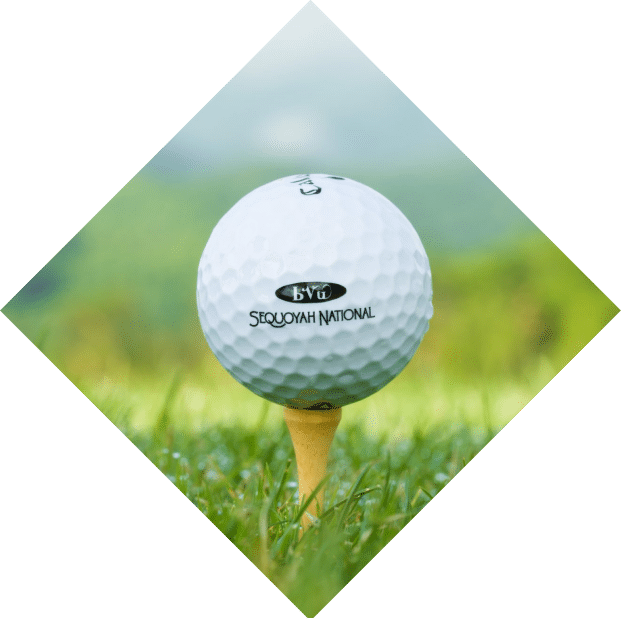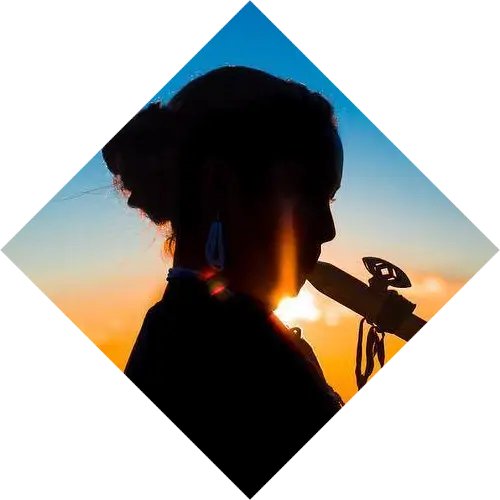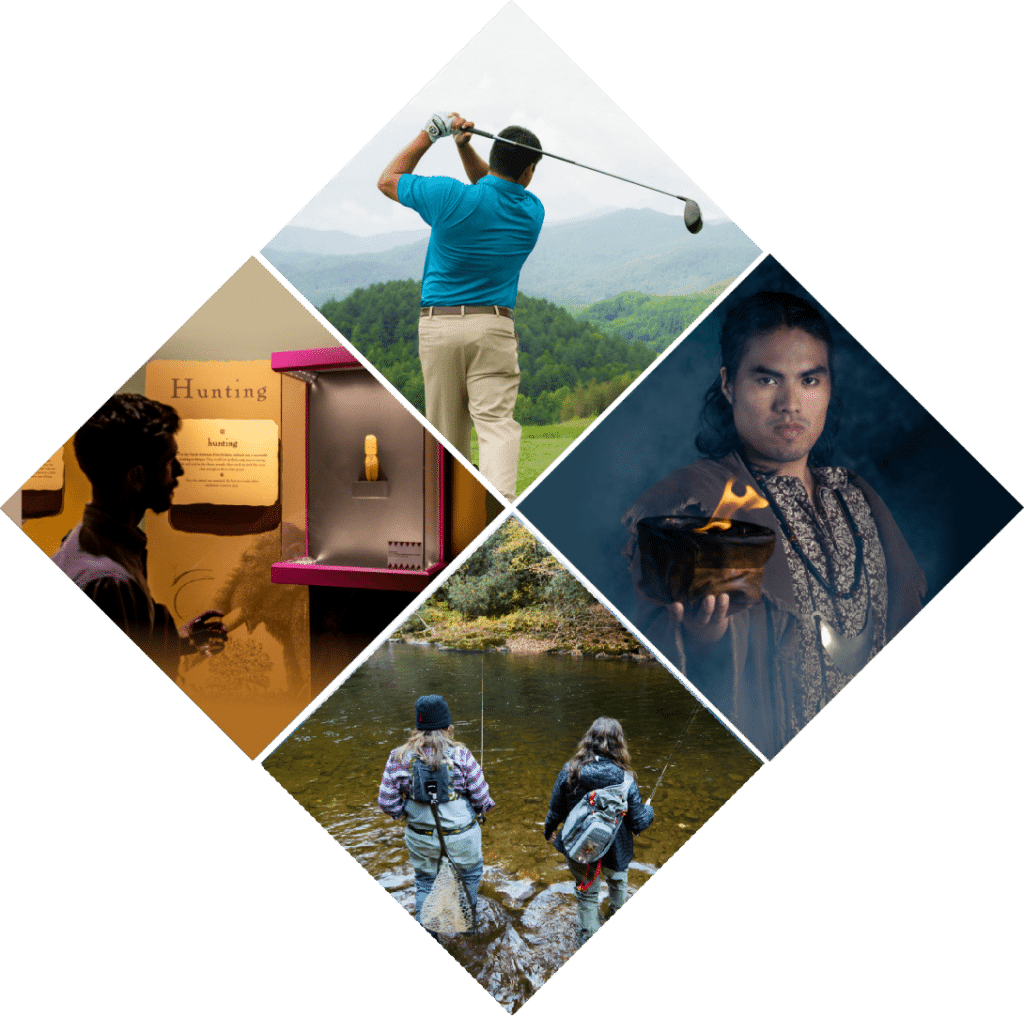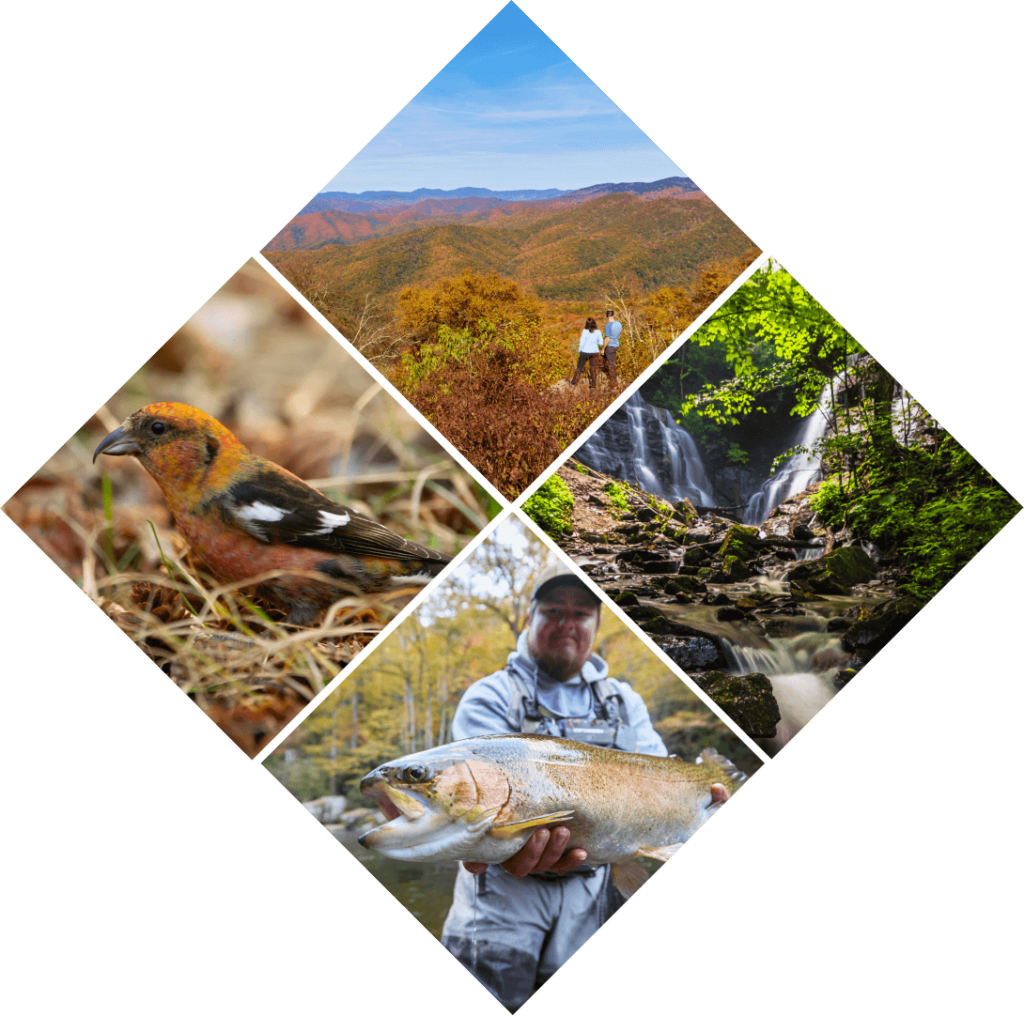A Conversation with Mike Crowe from the Museum of the Cherokee PEOPLE
Before the development of the Cherokee written language, tattoos were used to identify one another in historic societies, and were especially prevalent among warriors, who had to earn their marks. Tattoos were also used during ceremonies. However, there is not a lot of documentation about these customs.
We talked to Mike Crowe (pictured), one of the Atsila Anotasgi Cultural Specialists at the Museum of the Cherokee People, to find out more about traditional tattoos and practices of the Eastern Band of Cherokee Indians.
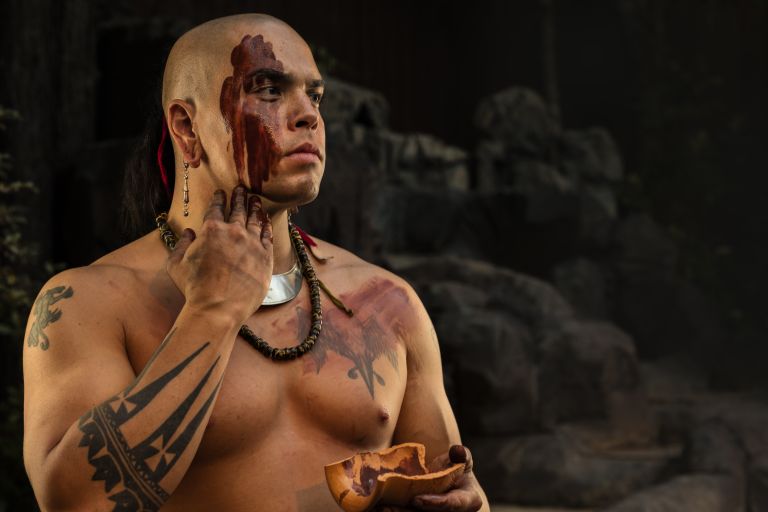
Can you tell US about the traditional tattoos and practices of the Cherokee?
Applying marks to our bodies that means something is universal in the world. You can see that in different cultures, but for us, (Eastern Band of Cherokee Indians), there aren’t very many images from the historic period showing natives with tattoos. But I believe the tattoos may have a language that was beyond communal bounds.
The way we earned our markings as men was in a wartime scenario. This also applied to the hair style worn, and the studding of our lobes as a status indicator. Those markings would be like a stack of ribbons, in a military sense.
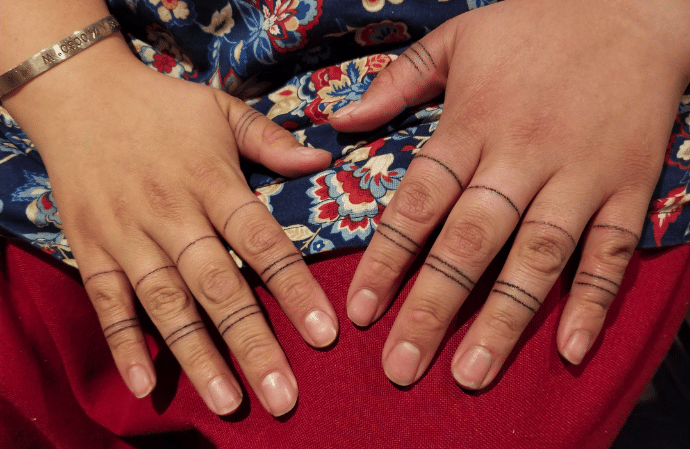
How were traditional tattoos created and applied to the body?
Usually with copper or bone needles. I’ve heard locust thorns might have been used, and they would have been oiled a number of times, because they’re a natural irritant.
The ink would have been charred river birch, and it’s a natural astringent. The color palette was fairly limited. Mostly black and red. The red would be iron ochre, most likely. Cherokee, North Carolina, is a very mineral rich area. That ochre is basically like an oxidation from iron ore deposits in the ground. So, basically rust.
We recently had Mr. Warren Taylor from Williamsburg, VA, give a tattooing demonstration at the museum. He’s from the Pamunkey nation; basically the descendants of Powatan and Pocahontas. His grandfather went to school with my grandfather. I worked with him in Colonial Williamsburg. He came down and gave a demonstration of the process. He fashioned a needle from copper conduit. He tattooed Tyra Maney’s fingers (pictured below; photo by Kristy Herron) and I had a band applied to my leg, similar to some of the ones you can see in the iconography from the Mississepean period.
DO YOU CONSIDER TATTOOING A SACRED PRACTICE?
I think it could be. It was in some regards. I suppose that’s kind of left up to individual discretion nowadays.
What are some popular traditional tattoos that you see?
The true designs we see our ancestors depicted wearing include deltoid points, like projectiles, spearheads, and arrow points. These can serve as a reminder of the right way.
You also see design elements that occur in nature: lightning, animals, the larger cats in the area, cat whiskers; the bear claws that our men might have worn into battle—they believe they took the characteristics of those animals into battle.
Definitely traditional designs that are applied to the body—borrowed designs, like the pottery designs or basket designs. Also masks.
How do you feel about people asking about your tattoos? Are you open to sharing the stories and meaning behind your tattoos, or do you feel like that’s private?
It’s part of what I do. I don’t feel any kind of way about it. I give people varying lengths of info on the practice, and why I have the markings that I do. I’m trying to carry that part of our culture on as well, and starting from the ground up, because there’s not a lot of information out there.
How old were you when you got your first tattoo?
I was 18, in the Marine Corps. There’s definitely a strong tradition of tattooing in all branches of the military. But I only started exploring traditional tattoos when I became involved in the work that I’m doing now.
I have some deltoid points and a design that looks like a Maltese cross, and a mountain design. And then I also have a design that’s part of one of my traditional tattoos that some people interpret as lightning.
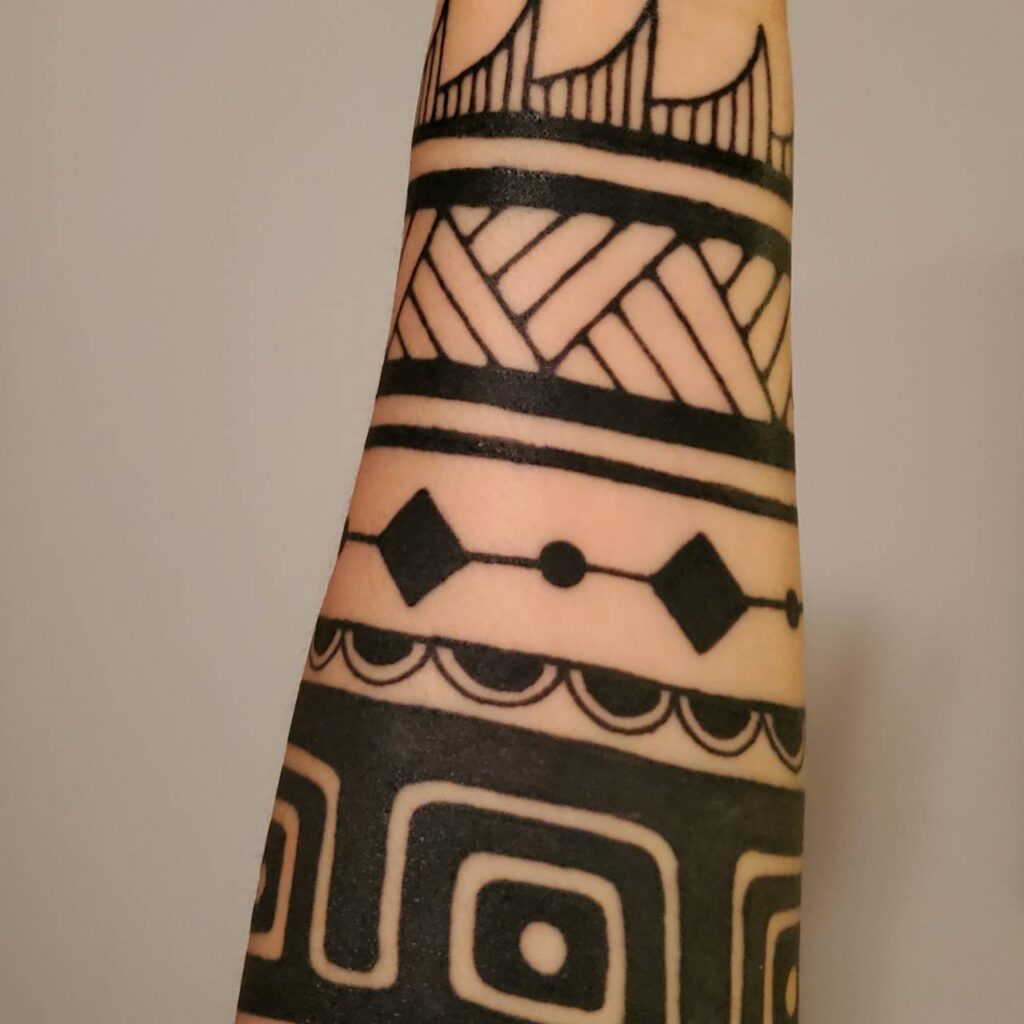
The photo shows tattoos inspired by traditional Cherokee pottery designs. Photo by Kristy Herron.
Meet Mike and Other Cultural Specialists at the Museum of the Cherokee People
Interested in meeting Mike or the other Atsila Anatosagi Cultural Specialists at the Museum of the Cherokee People? The specialists can be found outside of the museum on sunny days, or inside the lobby demonstrating various aspects of Cherokee culture.
Follow Visit Cherokee on Facebook for upcoming events, news from the attractions, things to do in Cherokee, and so much more!
